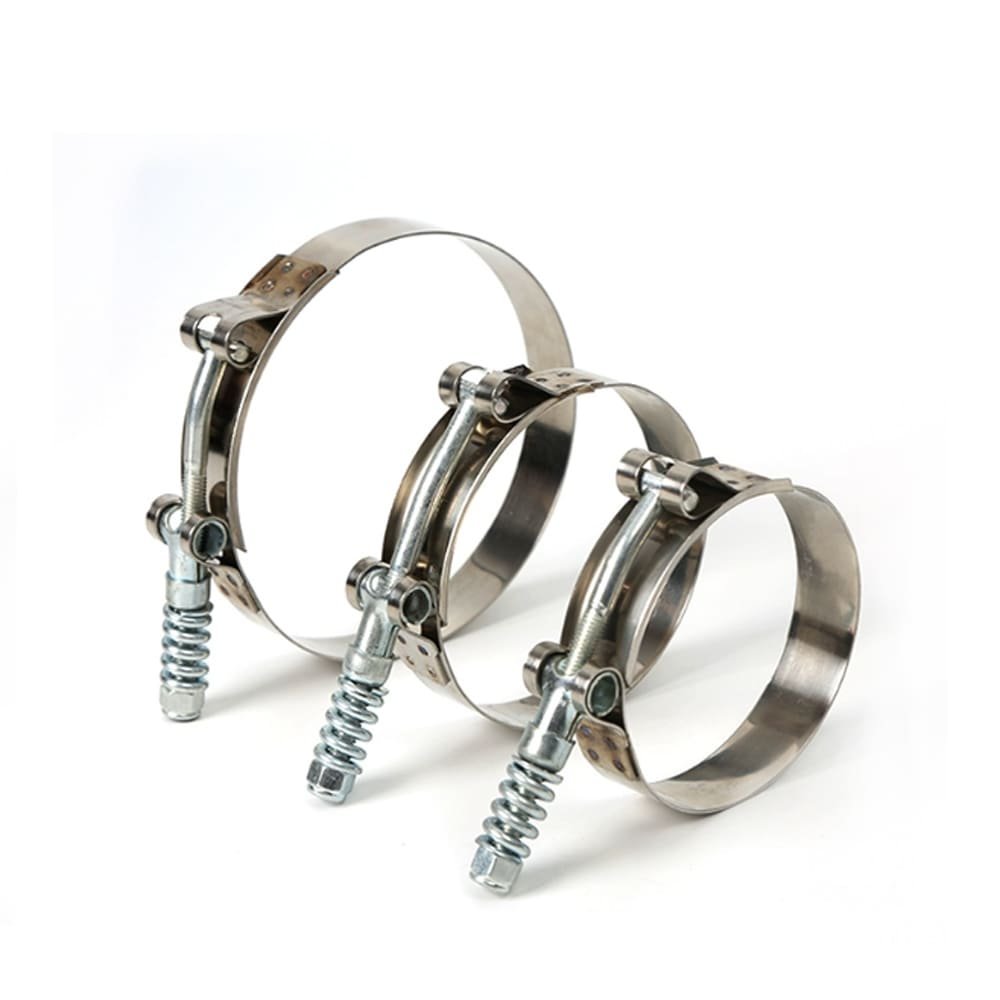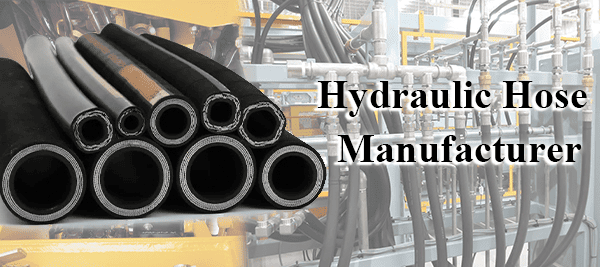Οι σφιγκτήρες σωλήνων ασφαλίζουν και κρατούν εύκαμπτες σωλήνες σε εξαρτήματα ή συνδετήρες. Αυτό εξασφαλίζει μια ασφαλή σύνδεση και βοηθά στην αποτροπή της ολίσθησης ή διαρροής του εύκαμπτου σωλήνα. Σε αυτόν τον οδηγό, Θα εξηγήσουμε τα βήματα για το πώς να χρησιμοποιήσετε αποτελεσματικά τους σφιγκτήρες σωλήνα, Τα πάντα από τα βασικά έως τις προηγμένες συμβουλές.
Για να χρησιμοποιήσετε ένα σφιγκτήρα σωλήνα, Το πρώτο πράγμα που θέλετε να κάνετε είναι να σύρετε το σφιγκτήρα πάνω από τον εύκαμπτο σωλήνα και να το βάλετε στη θέση όπου το χρειάζεστε. Τότε, Θέλετε να σφίξετε τον σφιγκτήρα με ένα κατσαβίδι ή πένσες, Βεβαιωθείτε ότι είναι σφιχτό, Αλλά όχι πολύ σφιχτό. Ανάλογα με τον τύπο του σφιγκτήρα που έχετε (σαν σφιγκτήρα εργαλείων σκουληκιών ή σφιγκτήρα ελατηρίου), Μπορεί να χρειαστεί να ρυθμίσετε τον μηχανισμό ή την ένταση για να πάρετε μια καλή σφραγίδα. Τελικά, Αφού σφίξετε τον σφιγκτήρα, Βεβαιωθείτε ότι δεν έχετε διαρροές.
Τώρα που έχετε μια γενική ιδέα για τα βασικά, Ας βουτήξουμε στους διαφορετικούς τύπους σφιγκτήρων σωλήνων και πώς να επιλέξετε το σωστό για την αίτησή σας, καθώς και αντιμετώπιση κοινών λαθών.

Πώς λειτουργούν οι σφιγκτήρες του εύκαμπτου σωλήνα?
Οι σφιγκτήρες της άνοιξης είναι μοναδικοί στο ότι χρησιμοποιούν την τάση της άνοιξης για να κρατήσουν έναν εύκαμπτο σωλήνα σφιχτά στη θέση τους. Τα ανοιχτά άκρα αυτών των σφιγκτήρων συγκρατούνται από την τάση της άνοιξης. Όταν η καρτέλα πιέζεται, Ο σφιγκτήρας διευρύνεται, επιτρέποντάς σας να το τοποθετήσετε πάνω από τον εύκαμπτο σωλήνα. Μόλις κυκλοφορήσει, Η ένταση της άνοιξης εφαρμόζει αυτόματα συμπίεση, κρατώντας με ασφάλεια το εύκαμπτο σωλήνα στη θέση του.
Αυτοί οι σφιγκτήρες χρησιμοποιούνται συχνά για ευέλικτες συνδέσεις, ειδικά σε εφαρμογές όπου ο εύκαμπτος σωλήνας μπορεί να επεκταθεί ή να συμβάλει λόγω αλλαγών πίεσης. Είναι εύκολο στην εγκατάσταση, αφαιρώ, και προσαρμόστε
Ποιοι είναι οι διαφορετικοί τύποι σφιγκτήρων σωλήνων?
Υπάρχουν πολλοί τύποι σφιγκτήρων σωλήνων, κάθε κατάλληλο για διαφορετικές εφαρμογές. Εδώ είναι οι πιο συνηθισμένοι σφιγκτήρες:
- Σφιγκτήρες με εργαλεία σκουληκιών: είναι οι πιο συχνά χρησιμοποιούμενες σφιγκτήρες και έχουν μεταλλική ζώνη με μηχανισμό βιδών. Απλώς σφίξτε τη βίδα για να ασκήσετε πίεση γύρω από τον εύκαμπτο σωλήνα.
- Σφιγκτήρες ελατηρίου: Αυτά τα σχέδια διαθέτουν μηχανισμό ελατηρίου και είναι καλύτερα κατάλληλα για εύκαμπτους σωλήνες. Καθώς αυξάνεται η πίεση, Προσαρμόζονται αυτόματα στο μέγεθος του σωλήνα.
- Σφιγκτήρες T-Bolt: Αυτά χρησιμοποιούνται για εφαρμογές υψηλής πίεσης που απαιτούν πιο ασφαλή σφραγίδα. Το T-bolt επιτρέπει ακόμη και σφίξιμο πάνω από μια μεγαλύτερη επιφάνεια.

Πώς μπορώ να σφίξω σωστά ένα σφιγκτήρα σωλήνα?
Η σύσφιξη ενός σφιγκτήρα του σωλήνα εξασφαλίζει σωστά ότι παραμένει στη θέση του χωρίς να καταστρέφει τον εύκαμπτο σωλήνα. Ακολουθήστε αυτά 5 βήματα:
- Τοποθέτηση του σφιγκτήρα: Τοποθετήστε το σφιγκτήρα του σωλήνα γύρω από τον εύκαμπτο σωλήνα και τοποθετήστε το εκεί όπου θέλετε να σφραγίσει.
- Σφίξτε τον σφιγκτήρα: Χρησιμοποιήστε ένα κατσαβίδι, κλειδί, ή πένσες για να σφίξουν τον σφιγκτήρα μέχρι να είναι άνετο αλλά όχι υπερβολικό. Η υπερβολική εξουσιοδότηση μπορεί να βλάψει τον εύκαμπτο σωλήνα ή να προκαλέσει διαρροές.
- Ελέγξτε για διαρροές: Μόλις σφίγγεται, Ελέγξτε τον εύκαμπτο σωλήνα για τυχόν σημάδια διαρροών εφαρμόζοντας πίεση στο σύστημα.
- Ρυθμίστε εάν είναι απαραίτητο: Εάν βρείτε διαρροή, Χαλαρώστε το σφιγκτήρα και επανατοποθετήστε το πριν σφίξετε ξανά.
- Βεβαιωθείτε ότι ο σφιγκτήρας είναι σωστά ασφαλισμένος: Διπλασιάστε ότι ο σφιγκτήρας επικεντρώνεται και ομοιόμορφα σφίγγει γύρω από τον εύκαμπτο σωλήνα.
Πώς να χρησιμοποιήσετε ένα σφιγκτήρα σωλήνα σκουληκιών
Το σφιγκτήρα σωλήνα σκουληκιών είναι ο πιο συνηθισμένος τύπος που χρησιμοποιείται στις εφαρμογές αυτοκινήτων και υδραυλικών εγκαταστάσεων. Εδώ είναι πώς να χρησιμοποιήσετε ένα:
- Βάλτε το σφιγκτήρα στον εύκαμπτο σωλήνα: Τοποθετήστε το σφιγκτήρα στον εύκαμπτο σωλήνα και σύρετε το στο σημείο όπου το θέλετε.
- Σφίξτε τη βίδα: Χρησιμοποιήστε ένα κατσαβίδι για να σφίξετε τη βίδα έως ότου ο σφιγκτήρας είναι άνετος ενάντια στον εύκαμπτο σωλήνα.
- Βεβαιωθείτε ότι είναι σφιχτό: Βεβαιωθείτε ότι ο σφιγκτήρας είναι αρκετά σφιχτός ώστε να διαρρεύσει ο εύκαμπτος σωλήνας, Αλλά μην το σφίξετε υπερβολικά και βλάπτετε τον εύκαμπτο σωλήνα.
Οι σφιγκτήρες με εργαλεία σκουληκιών είναι αξιόπιστο και εύκολο στη χρήση, καθιστώντας τα τέλεια για τις περισσότερες τυποποιημένες εφαρμογές.
Πώς να διορθώσετε ένα χαλαρό σφιγκτήρα σωλήνα?
Εάν παρατηρήσετε ότι ο σφιγκτήρας του σωλήνα σας είναι χαλαρή και προκαλεί διαρροές, Εδώ μπορείτε να κάνετε:
- Χαλαρώστε τον σφιγκτήρα: Εάν είναι απαραίτητο, Χρησιμοποιήστε ένα κατσαβίδι ή πένσες για να χαλαρώσετε το σφιγκτήρα.
- Επανατοποθετήστε το σφιγκτήρα: Μετακινήστε το σφιγκτήρα, ώστε να επικεντρώνεται γύρω από τον εύκαμπτο σωλήνα, εξασφαλίζοντας μια ομοιόμορφη σφραγίδα.
- Σφίξτε τον σφιγκτήρα: Αναζωογονήστε προσεκτικά τον σφιγκτήρα, βεβαιωθείτε ότι είναι άνετο αλλά όχι πολύ σφιχτό
Ο έλεγχος του εύκαμπτου σωλήνα για οποιαδήποτε φθορά είναι σημαντικός, Ως κατεστραμμένος εύκαμπτος σωλήνας μπορεί να μην σχηματίσει μια σωστή σφραγίδα ακόμη και με σφιχτό σφιγκτήρα.
Κοινά λάθη όταν χρησιμοποιείτε σφιγκτήρες σωλήνων και πώς να τα αποφύγετε
- Σφίγγοντας πάρα πολύ: Δεν θέλετε να στρέψετε κάτω στη βίδα για να βεβαιωθείτε ότι είναι σφιχτό, Επειδή μπορείτε να βλάψετε τον εύκαμπτο σωλήνα ή τον σφιγκτήρα και να προκαλέσετε διαρροές. Θέλετε να το σφίξετε σταδιακά και να το ελέγξετε για διαρροές πριν τελειώσετε.
- Χρησιμοποιώντας λάθος σφιγκτήρα: Μπορεί να χρειαστείτε ένα διαφορετικό είδος σφιγκτήρα για διαφορετικές εφαρμογές. Εάν προσπαθείτε να δημιουργήσετε σφραγίδα υψηλής πίεσης και χρησιμοποιείτε σφιγκτήρα ελατηρίου, Μπορεί να μην λειτουργεί καθώς και σφιγκτήρα εργαλείων σκουληκιών. Πρέπει να χρησιμοποιήσετε το σωστό σφιγκτήρα για τη σωστή εφαρμογή.
- Δεν ελέγχει για διαρροές: Μόλις τοποθετήσετε το σφιγκτήρα του σωλήνα, Πρέπει να ελέγξετε για διαρροές. Εάν δεν έχετε πάρει το σφιγκτήρα αρκετά σφιχτά, ή αν ο εύκαμπτος είναι κατεστραμμένος, Θα διαρρεύσει. Πρέπει να το ελέγξετε πριν το χρησιμοποιήσετε.



